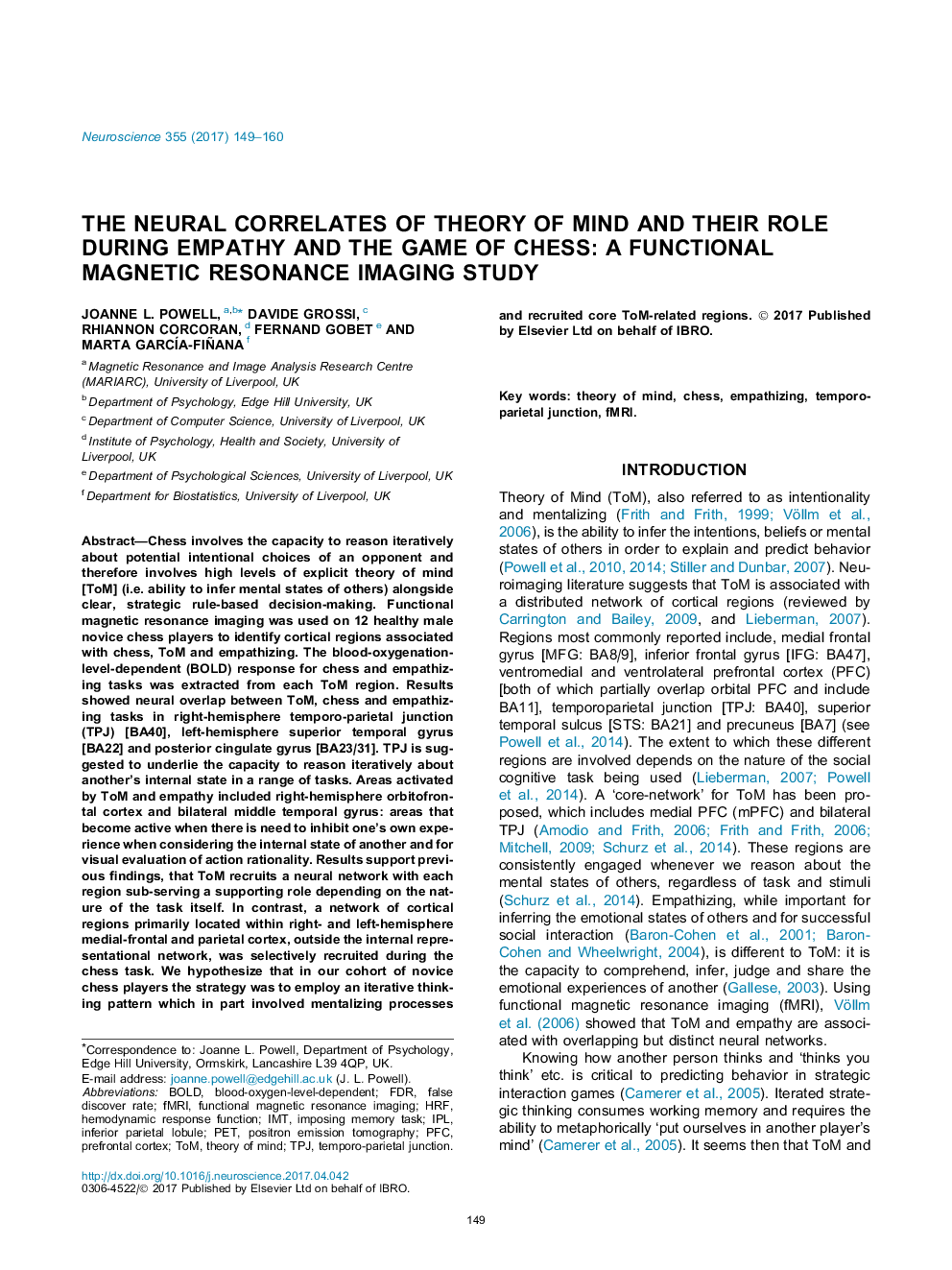| کد مقاله | کد نشریه | سال انتشار | مقاله انگلیسی | نسخه تمام متن |
|---|---|---|---|---|
| 5737603 | 1614721 | 2017 | 12 صفحه PDF | دانلود رایگان |
- The neural network associated with theory of mind, empathy and chess is investigated.
- Results show neural overlap in right TPJ, left STG and posterior cingulate gyrus across all three tasks.
- Medial frontal and parietal cortex was selectively recruited during the chess task.
- For novice chess players chess involves mental operations that are involved in inferences about others mental states.
Chess involves the capacity to reason iteratively about potential intentional choices of an opponent and therefore involves high levels of explicit theory of mind [ToM] (i.e. ability to infer mental states of others) alongside clear, strategic rule-based decision-making. Functional magnetic resonance imaging was used on 12 healthy male novice chess players to identify cortical regions associated with chess, ToM and empathizing. The blood-oxygenation-level-dependent (BOLD) response for chess and empathizing tasks was extracted from each ToM region. Results showed neural overlap between ToM, chess and empathizing tasks in right-hemisphere temporo-parietal junction (TPJ) [BA40], left-hemisphere superior temporal gyrus [BA22] and posterior cingulate gyrus [BA23/31]. TPJ is suggested to underlie the capacity to reason iteratively about another's internal state in a range of tasks. Areas activated by ToM and empathy included right-hemisphere orbitofrontal cortex and bilateral middle temporal gyrus: areas that become active when there is need to inhibit one's own experience when considering the internal state of another and for visual evaluation of action rationality. Results support previous findings, that ToM recruits a neural network with each region sub-serving a supporting role depending on the nature of the task itself. In contrast, a network of cortical regions primarily located within right- and left-hemisphere medial-frontal and parietal cortex, outside the internal representational network, was selectively recruited during the chess task. We hypothesize that in our cohort of novice chess players the strategy was to employ an iterative thinking pattern which in part involved mentalizing processes and recruited core ToM-related regions.
Journal: Neuroscience - Volume 355, 4 July 2017, Pages 149-160
